|
Some Notable Progress for Women, But a Blind Eye to the Exclusion of Asians
William Osborne December 29, 2015
Women Make Some Gains
The last three years have brought some important gains in the number of women in the Vienna State Opera Orchestra/Vienna Philharmonic. The Opera formation now employs fourteen women[1], and ten of them have been tenured into the orchestra's Philharmonic formation.[2]
Between 2012 and 2015, the State Opera Orchestra hired three new women violinists, and a woman principal bassoonist. The standards have been very high. Two of these violinists are winners of prestigious international solo competitions, and bassoonist Sophie Dartigalongue is also an active soloist. Ms. Dartigalongue's employment as principal bassonist is especially notable because women in principal positions are rare in many orchestras. The Chicago Symphony, for example, has had only two in its entire history. (* See the note at the end of the article.)
The four women hired by the State Opera Orchestra between 2012 and 2015 are listed here with their position and date of entry:
In addition, three women hired by the State Opera Orchestra from 2010 to 2012, completed their three year tenure periods and were made members of the orchestra's Philharmonic formation. These three women are listed here with their instrument and date of official membership in the Philharmonic:
The State Opera Orchestra has hired four women in the last three years, including two in 2015. It also tenured three women hired between 2010 and 2012 into the orchestra's Philharmonic formation. The last several months have thus been the most active yet for integrating women into the orchestra. Women now hold 14 of the 149 positions in the Vienna State Opera Orchestra for a ratio of 9.3%. Ten of these women have been tenured into the Philharmonic, which currently has 140 positions, for a ratio of 7.1%. In addition, Alina Pinchas, who began work in the Staatsoper Orchestra in 2013, will be eligible for tenure in a few months.
These are still the lowest percentages for any orchestra in the world, but the ratio of women among new hires in recent years has been encouraging. The yearly rate of increase for women in the State Opera Orchestra over the last three years is 0.89%, which is above the international average of 0.71% per year found in a sampling of 35 major American and European orchestras between 2005 and 2009.[3]
If all goes well, the entry of women into the Philharmonic for the next three years will follow at a similar rate. In 2012 the Staatsoper Orchestra hired one woman, in 2014 one, and in 2015 two. This means that up to 2018 a little over one woman per year is in the pipeline for possible tenure into the Philharmonic.
Another sign of progress is that Patricia Koll has been made one of the leaders of the second violin section. Her father Heinrich is one of the orchestra's solo violoists. The Vienna Philharmonic has a long tradition of hiring the sons of the orchestra's members. They feel this helps maintain the orchestra's performance practices. The Koll's illustrate that father-daughter traditions can exist as well. And perhaps someday, mother-daughter continutities will also be seen. Patricia was seven years old when the protests began twenty years ago.
The ten women members of the Vienna Philharmonic are pictured below, along with their instrument and year of membership.
And here are the four new women members who joined the Staatsoper Orchestra from 2012 to 2015 and who are awaiting tenure in the Philharmonic formation:
The Philharmonic Addresses Its Nazi History
In addition to these positive developments, the Vienna Philharmonic has allowed scholars over the last three years to document its history during the Third Reich. Thirty-two articles based on this research, most of which have been translated into English, can now be downloaded from the Vienna Philharmonic's website.[4] The orchestra had kept its archives largely closed until 2012, so little was widely known about the orchestra's activities during this period. This change of policy was caused to a considerable degree by the protests against the orchestra's gender and racial discrimination, which included calls for the orchestra to more fully address its Nazi history.[5] (See the extended endnote 5 for more information about this.)
Some of the general details about the orchestra's Nazi history were presented in Clemens Hellsberg's 1992 book, Demokratie der Koenige: Die Geschickte der Wiener Philharmoniker.[6] Hellsberg is a first violinist in the Vienna Philharmonic, the orchestra's archivist, and the orchestra's former Chairman. His book, written for the 150 year anniversary of the orchestra, omitted important aspects of the orchestra’s Nazi history, and contains a somewhat rationalizing tone. Most importantly, it is a large, expensive, coffee-table book in German that was not widely read, thus keeping the Nazi history of the orchestra largely veiled.
In addition to the Nazi history from 1938 to 1945, the more recent research about the Philharmonic covers the two decades following the war during which Nazi influences continued.
Several of the articles detail the politicization of the orchestra during the Reich, and describe its use as a propaganda instrument by the government. Fourteen of the articles are short biographies about Jewish members who were murdered or exiled during the Third Reich. Some of these biographies detail how some of the exiled members were treated poorly by the orchestra after the war. In some cases this included the denial of their pensions.[7] None of the exiled members returned to the orchestra.[8]
One of the most important articles is by Oliver Rathkolb, a professor of contemporary Viennese history at the University of Vienna. It deals with the difficulties the Allies had in de-Nazifying the orchestra.[9] While the Berlin Philharmonic only had 20 Nazi Party members, the Vienna Philharmonic had 60, which comprised about 50% of the orchestra.[10] If all the Nazis had been removed, the Vienna Philharmonic would have been severely damaged, if not destroyed. The Allies thus decided to apply weaker standards of denazification to the orchestra than to Austrian society in general -- with unfortunate consequences that were notable for the future of the orchestra.
There is also interesting information about how a group of hardcore Nazis in the Philharmonic denounced a small number of their Nazi colleagues in order to rehabilitate the orchestra’s image while leaving the denouncers unscathed even though they were just as bad or worse. In a word, a few Nazi colleagues in weak positions to defend themselves were used as sacrificial lambs to protect the more powerful Nazis in the orchestra. It is a positive sign that the Vienna Philharmonic is now openly addressing and condemning actions that resulted from a weak process of de-Nazification.
It is notable, however, that none of the articles discuss how weak denazification affected the orchestra's postwar continuation of sexist and racist employment practices.
The research behind these articles has also resulted in two books, one by Fritz Trümpi (pictured above) about the politicization of the Berlin and Vienna Philharmonics during the Third Reich.[12] And a second, co-authored by Fritz Trümpi and Bernadette Mayerhoffer, about the members of the Philharmonic who were murdered or exiled during the Reich.[13] The researchers have noted that documents are missing from the Philharmonic's archives, and that further research is necessary to fully document the orchestra's Nazi period.
These articles represent a significant change in how the Vienna Philharmonic views its Nazi hsitory. In late December 1999, for example, the Vienna Philharmonic added quotes to its website by Wilhelm Jerger to substantiate its claims about its unique style and sound. Jerger was the Chairman of the orchestra during the Third Reich and a Lieutenant in the SS who worked closely with the Nazi regime to advance his career. In 1942, he wrote a book about the orchestra which contained long father/son genealogical tables of some of the major string players. Jerger placed asterisks by the names of all individuals who were "non-Aryan” and explained that the genetic stock of the Philharmonic was so "tough" that the purity of their "blood" and style was not notably damaged by such dysgenic influences. In response, I wrote a report about who Jerger was and put it on the Internet where it was widely read. The next day, January 1, 2000, the Philharmonic quickly removed all references to Jerger from their website. The orchestra, of course, had no illusions about who Jerger was, but at the time it didn't bother them. It is an interesting sign of progress that now, 15 years later, we see articles linked on the Philharmonic's website, strongly denouncing Jerger as a Nazi opportunist.
The Continuing Exclusion of Asian Musicians
The Vienna Philharmonic has
not made any progress at all in
one of the most serious and sensitive areas. It continues its long history of
excluding people who are fully Asian and have Asian family names.
The orchestra has traditionally felt that such individuals would destroy
the ensemble’s image of Austrian authenticity.[14] For
the last 40 years, around a quarter to a third of the students at
The world continues, however, to turn a blind eye to the Vienna Philharmonic’s ongoing problems with racism. Even journalists seldom mention it, since the topic is so sensitive, but there have been some exceptions, such as a 2012 article by Joshua Kosman in the San Francisco Chornicle[17], and one by Norman Lebrecht in The Spectator in 2014.[18] It is also highly ironic that scholars like Fritz Trümpi and Bernadette Meyerhoffer would write a book about the murdered and exiled Jewish members of the orchestra, whose translated title is Orchestrated Expulsion: Undesirable Musicians of the Vienna Philharmonic, while the orchestra continues to exclude Asians as undesirable musicians. In part, the orchestra focuses on the past in order to ignore the present.
In spite of these troubling scenarios, the Vienna Philharmonic deserves respect for the progress it has made over the last four years to include women and address its Nazi history. As vestiges of cultural racism such as the exclusion of Asians become evermore anachronistic, it seems likely that the Vienna Philharmonic, which is increasingly occupied by a younger, more enlightened generation, will eventually overcome those obstacles and make the same progress in hiring Asians that it has with women.
We see that the protests that began in 1995 against the Vienna Philharmonic, and which continue to this day, have led to positive results. Both the Czech and Vienna Philharmonics agreed to admit women in 1997. There are now 14 women in the Vienna State Opera Orchestra and 17 in the Czech Philharmonic. This means that thirty-one women now have full time jobs with full benefits and pensions in their respective country's most famous orchestra. The protesters, and especially the International Alliance for Women In Music, should be pleased with these ongoing results.[19] It should also be clearly noted that the Vienna Philharmonic and Austria's political establishment have contributed significantly to the effort and have insured a more secure place for the future of their orchestra.
+++
* I did not include Assistant and Associate positions for the CSO since they have a lower status. I also did not include harp since this instrument has traditionally been played by women and is often an section of only one person.
(For a more complete understanding of changes taking place in the Vienna Philharmonic’s employment practices, and to understand the evolution and timelines involved, it is helpful to also read the updates I have published for the years 2006, 2011, and 2012. For an analysis of the Vienna Philharmonic’s traditional ideologies placed in a broader historical context see my article “Symphony Orchestras and Artist-Prophets: Cultural Isomorphism and the Allocation of Power in Music.” Leonardo Music Journal 9 (1999): 69-76. It can be read online here.)
CORRECTIONS: This article was corrected on December 30, 2015 to note that Alina Pinchas began work in the Staatsoper in 2013 (not 2012 which is when she won her audition,) and that Anneleen Lenaerts entered the Philharmonic in 2014 (not 2105.)
Endnotes [1]
See the personnel listings on the website of the Vienna State
Opera at: < http://www.wiener-staatsoper.at/Content.Node/home/kuenstler/orchester/uebersichtsseite- [2]
See the personnel listings on the Philharmonic's website at: http://www.wienerphilharmoniker.at/index.php?set_language=de&cccpage=musicians
[3] The Representation of Women in European and American Orchestras Update 2009 < http:www.osborne-conant.org/orch2009.htm > [4] The Vienna Philhalrmonic under national Socialism (1938 - 1945) < https://www.wienerphilharmoniker.at/orchestra/history/national-sozialism > [5]
As an example, see my 1997 article "The Image
of Purity." And my article "Symphony Orchestras and Artist-Prophets:
Cultural Isomorphism and the Allocation of Power in Music.” Leonardo
Music Journal 9 (1999):
69-76. It can be read online
here: < http://www.osborne-conant.org/prophets.htm
> [6] Clemens Hellsberg's, Demokratie der Koenige: Die Geschickte der Wiener Philharmoniker (Zurich: Schweizer Verlagshaus: Wien: Kremayr & Scheriau; Mainz: Musikverlag Schott, 1992) 624-650. [7] Bernadette Mayrhofer and Fritz Trümpi, Orchestrierte Vertreibung: Unerwünschte Wiener Philharmoniker. Verfolgung, Ermordung und Exil. Mandelbaum Verlag 2014. See: http://www.mandelbaum.at/books/764/7523 [8] Ibid. [9] Oliver Rathkolb, "Notes on the “Denazification” < http://wphdata.blob.core.windows.net/documents/Documents/pdf/NS/ns_rath_entnazifizierung_en_v01.pdf [10] Ibid. [11] Ibid. [12] Fritz Trümpi, Politisierte Orchester, (Köln: Böhlau Verlag, 2011) [13] Bernadette Mayrhofer and Fritz Trümpi, Orchestrierte Vertreibung: Unerwünschte Wiener Philharmoniker. Verfolgung, Ermordung und Exil. (Wien: Mandelbaum Verlag, 2014.) [14] For further discussion and documentation of the orchestra's views toward Asian musicians, see my article published by the M.I.T. Press, "Symphony Orchestras and Artist-Prophets: Cultural Isomorphism and the Allocation of Power in Music.” Leonardo Music Journal 9 (1999): 69-76. It can be read online here: < http://www.osborne-conant.org/prophets.htm [15] For documentation of the orchestra's racial ideologies see: Roland Girtler, "Mitgliedsaufnahme in den Noblen Bund der Wiener Philharmoniker Als Mannbarkeitsritual", Sociologia Internationalis, Beiheft 1 (1992). See also: Elena Ostleitner, "Liebe, Lust, Last und Lied" (Wien, Bundesministerium fuer Unterricht und Kunst, 1995) p. 6. See also: Musikalische Misogynie," broadcast by the West German State Radio, February 13, 1996, transcribed and translated into English at: http://www.osborne-conant.org/wdr.htm [16] Lucas Wiegelmann, "Deutsche Orchester und ihr Rassismus-Problem" (Die Welt, August 11, 2009.) The article is online here: http://www.welt.de/kultur/article4295385/Deutsche-Orchester-und-ihr-Rassismus-Problem.html The lack of minorities is also a serious problem in American orchestras where only about 2% of the membership is African-American, though the causes are very different than in the Vienna Philharmonic. [17]
Joshua Kosman, “ [18] "The Nazi Origin's of the Vienna Phil's New Year's Day Concert," The Spectator, December 13, 2014. See the article online here: http://www.spectator.co.uk/2014/12/the-nazi-origins-of-the-vienna-phils-new-years-day-concert/ [19] (A documentation of the first five years of the protests that helped lead the Staatsoper Orchestra/Vienna Philharmonic to admit women can be found here.)
(All
website listings were viewed on December 30th, 2015.)
|
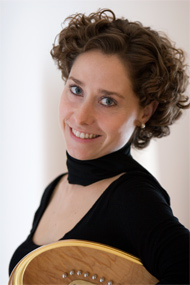
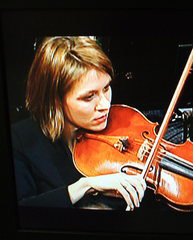
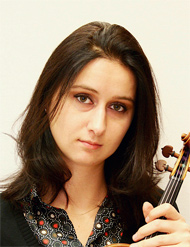
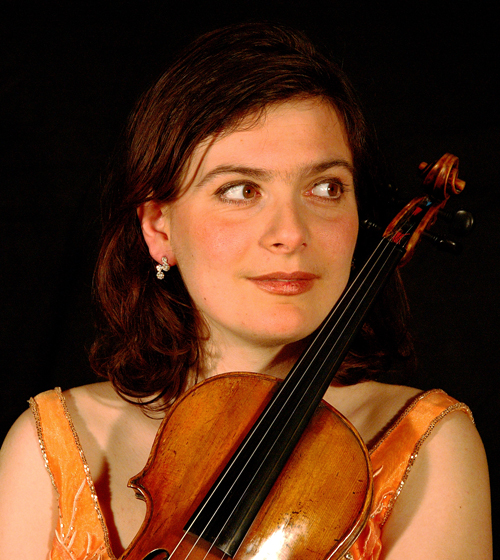

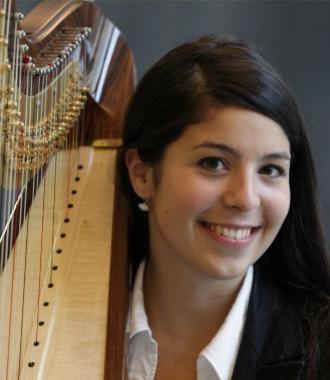
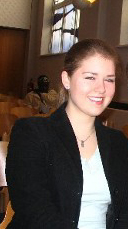
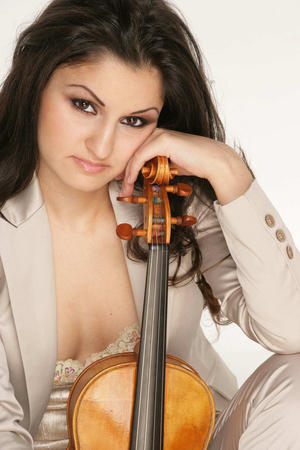
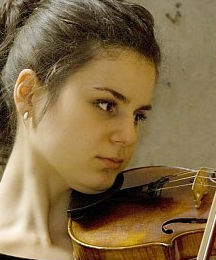
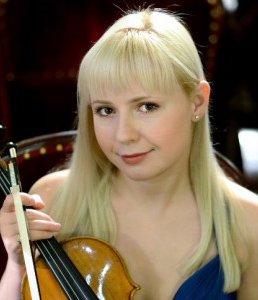

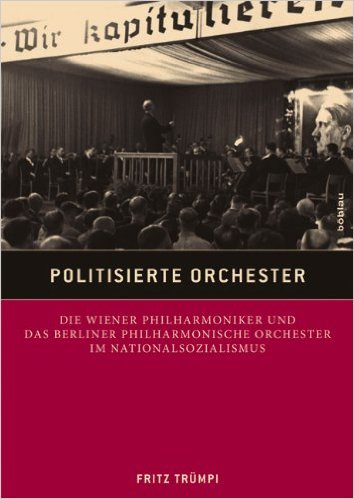 One
of the most notorious results was that in 1966 the orchestra re-issued
its highest award, "The Honor Ring of the Vienna Philharmonic,” to the war criminal
One
of the most notorious results was that in 1966 the orchestra re-issued
its highest award, "The Honor Ring of the Vienna Philharmonic,” to the war criminal 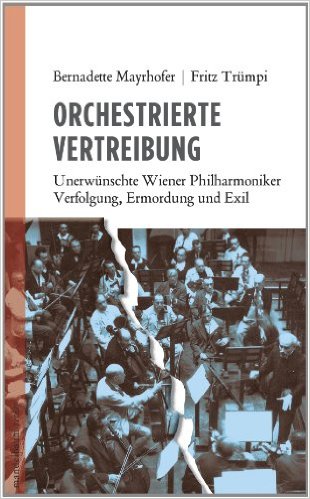 University
University The
poster pictured at the right for a concert performance of Wagner conducted
by Kent Nagano in Baden-Baden, Germany, in 2005 illustrates
the differing attitudes that can exist in the German-speaking world toward
race and culture. It reflects very different social mores, and might
provide insights into why a highly traditional orchestra like the Vienna
Philharmonic, which is deeply concerned about its image of authenticity, does not have any members who are fully Asian and have Asian
family names.
The
poster pictured at the right for a concert performance of Wagner conducted
by Kent Nagano in Baden-Baden, Germany, in 2005 illustrates
the differing attitudes that can exist in the German-speaking world toward
race and culture. It reflects very different social mores, and might
provide insights into why a highly traditional orchestra like the Vienna
Philharmonic, which is deeply concerned about its image of authenticity, does not have any members who are fully Asian and have Asian
family names.